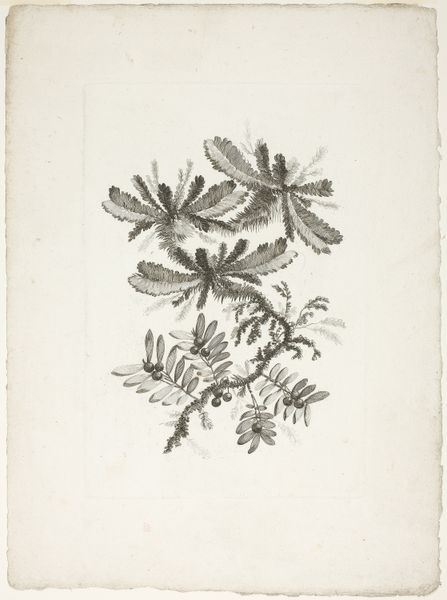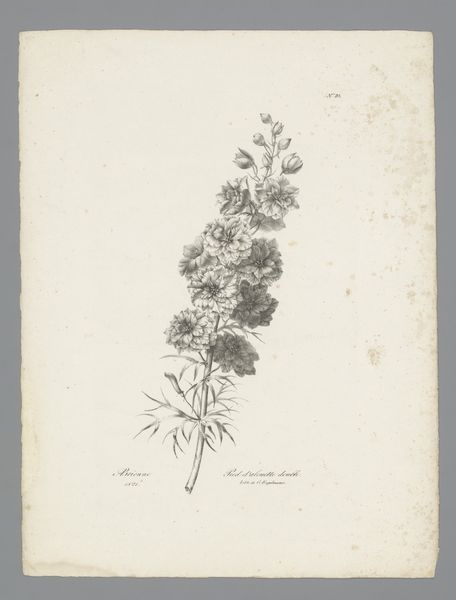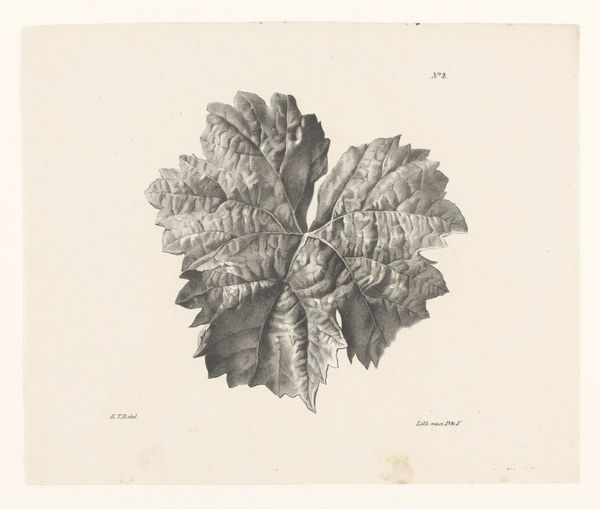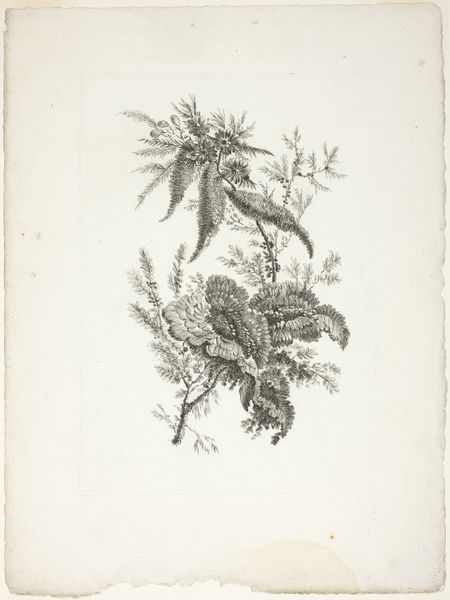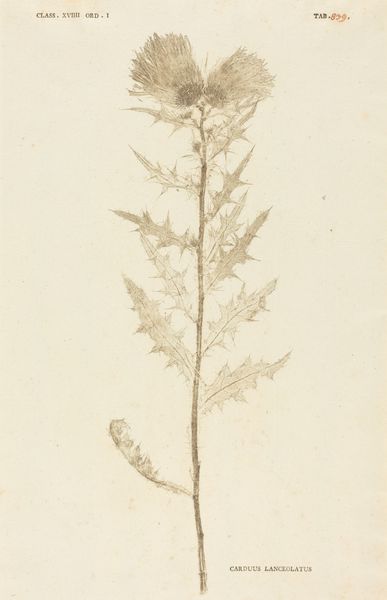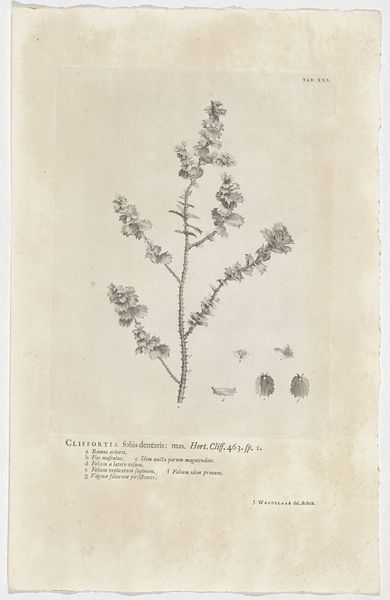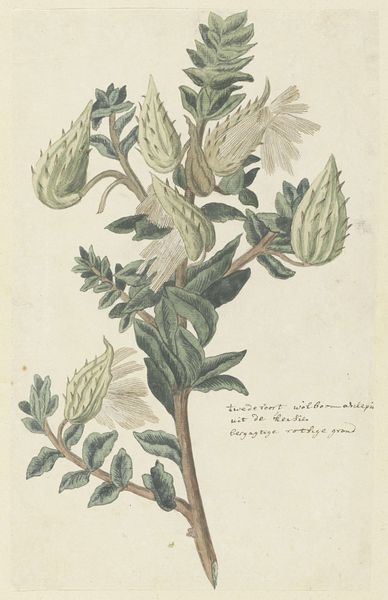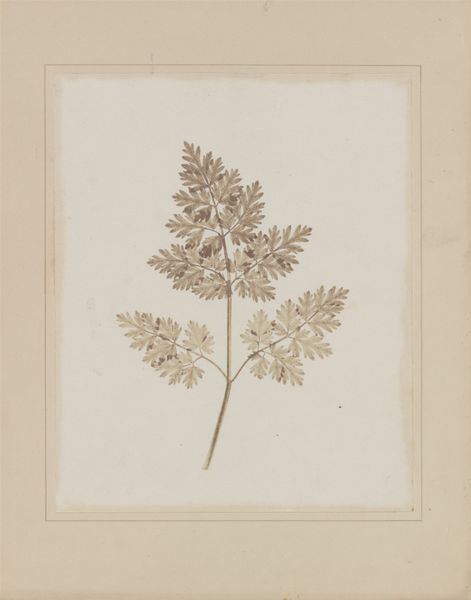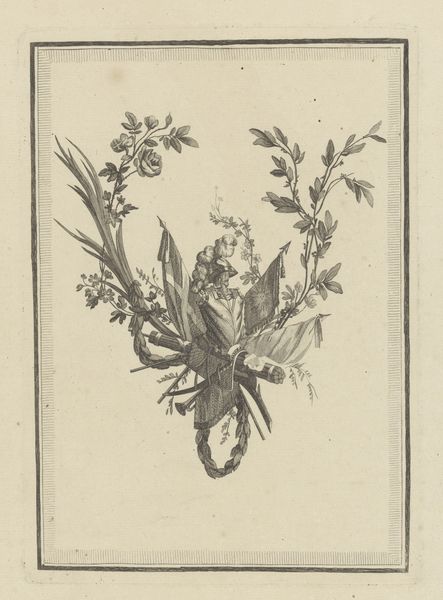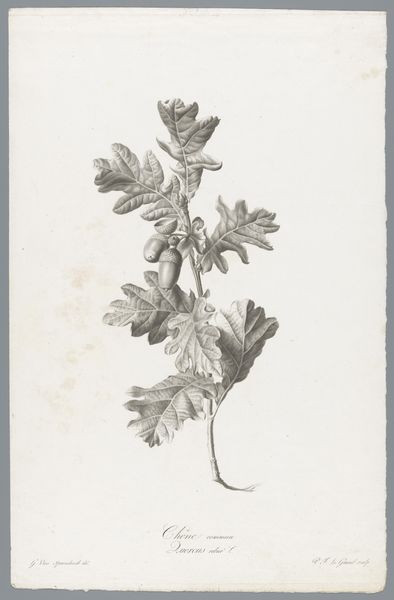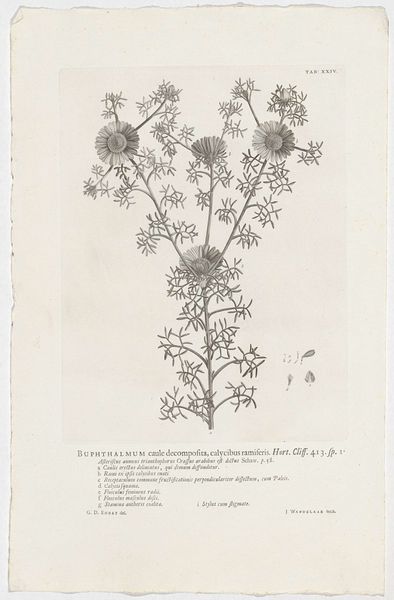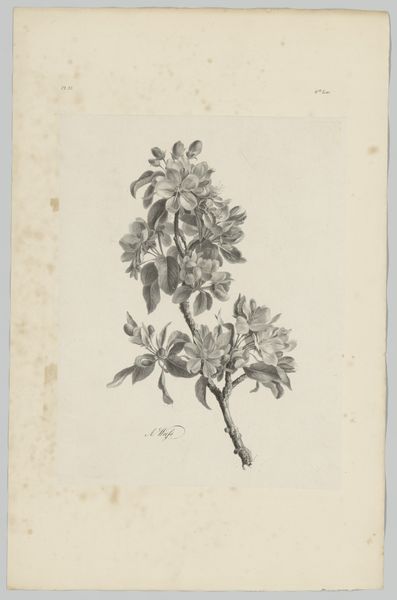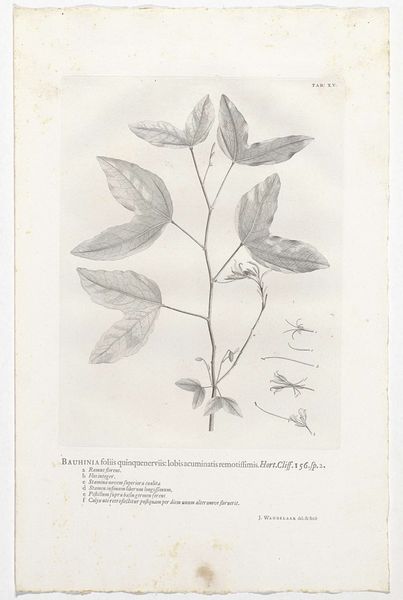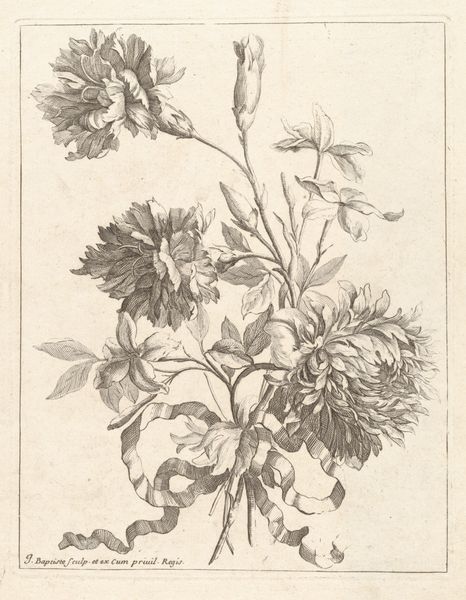
drawing, paper, ink
#
drawing
#
landscape
#
paper
#
ink
#
pen-ink sketch
#
northern-renaissance
#
realism
Dimensions: height 589 mm, width 437 mm
Copyright: Rijks Museum: Open Domain
Editor: This ink drawing on paper, "Studie van een tak met eikenbladeren," or Study of a Branch with Oak Leaves, was created by Antoine Pierre Mongin in 1816. There's a striking realism in the depiction, almost like a botanical illustration. How do we understand its context within the art world of its time? Curator: It’s crucial to consider the public role of art during this period. The early 19th century saw a surge in scientific exploration and documentation. Botanical studies, like this one, gained significance not just as art, but as vital records of the natural world. Museums were emerging as centers for both artistic display and scientific learning. Editor: So, was Mongin trying to be scientific, artistic, or both? Curator: Probably both. He was likely responding to a societal desire for accurate depictions of nature, while also engaging with artistic traditions of landscape drawing. Think about the politics of imagery. Who had access to these images? Who commissioned them? Editor: Presumably the educated elite, those with an interest in both art and natural science? This artwork, then, speaks to a specific social class and their values? Curator: Precisely. And it raises questions about the museum’s role in reinforcing those values when it displays such pieces today. Are we simply preserving a historical document, or are we also perpetuating certain power structures? Does showcasing this drawing risk turning scientific curiosity into a symbol of exclusivity? Editor: It makes you think about the story behind a seemingly simple nature study. I hadn't considered how intertwined social history is with our reading of it. Curator: And how the institutions that house art continue to shape its meaning today.
Comments
No comments
Be the first to comment and join the conversation on the ultimate creative platform.
